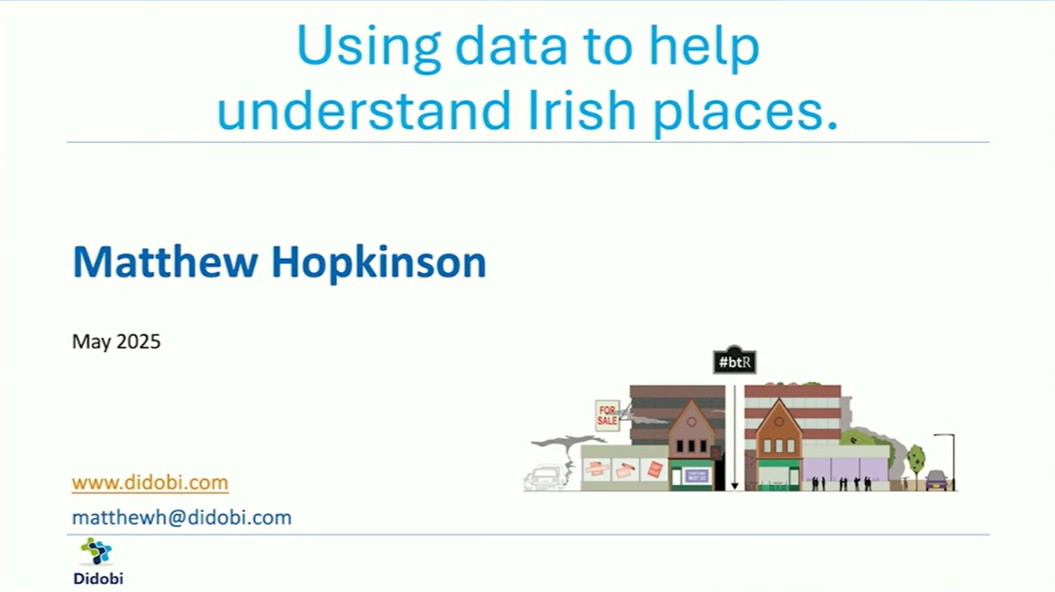Business rates – tax or subsidy?
This week has seen another report on our high streets, this one from Ken Shuttleworth (The Gherkin architect) and others along with the BIS Select Committee stating that business rates are ‘not fit for purpose and need a complete overhaul’. This follows on from other reports of which the Grimsey Review, through solid evidence based research, in its 12th recommendation stated ‘The business rates system needs a root and branch review to establish a flexible system that will reflect changes in economic conditions as they occur’. The facts as detailed in the Grimsey Review are as follows:
In England there are 471,000 shops in the rating list with a total Rateable Value of £12.778bn giving an average Rateable Value of £27,130 meaning business rates payable of circa £12,750 pa. In 2012 before reliefs, the total yield was £25.730bn. Bricks and mortar retailers, therefore, account for approximately 23.34% of the total business rate yield.
Mary Portas’ review of the high street in December 2011 also highlighted the issue of business rates in three of her recommendations:
6. Government should consider whether business rates could better support small businesses and independent retailers 7. Local authorities should use their new discretionary powers to give business rate concessions to new local businesses 8. Make business rates work for business by reviewing the use of the RPI with a view to changing the calculation to CPI
The BRC commissioned E&Y to carry out a review which also recommended fundamental review. So to say that there is a groundswell of opinion in favour of change in business rates would be an understatement.
You may be thinking by now what a bizarre title I have given to these thoughts. Business rates – tax or subsidy? All will become clear later when I look at other sectors and the thorny issues that lie behind such an established and antiquated revenue generator for government. In addition whilst little has changed with the business rates system it should not be forgotten that c. £25m has been spent on town centre initiatives but the big question to what effect. The BIS Select Committee highlighted how government has been unable to provide details for how much of the £2.3m allocated in support of Mary Portas’ review has been spent and to what effect. For those shouting back Percy Pig (Dartford) I think we need more solid evidence across the whole grant. Was this money for the people to be spent by the people or for the people but to be spent by the council?
Various issues lie at the heart of business rates and I hope to set out a few of them in layman’s terms below as otherwise it is very easy to get lost in the detail and the numbers;
- It is a five-year taxation system based on property. The last review was effective as of 2010 but with values based on 2008 data. As you will be aware a lot has happened since 2008 including a fourfold increase in vacancy rates along with thousands of retail administrations. Five years is a long time in retail and the market has rebalanced significantly towards shorter lease lengths, more incentives so less clarity around the real rents being paid along with the birth of the omni-channel environment (bricks and clicks).
- The issues that we face today are long-term structural issues that many should have seen coming back in the 1980s let alone since 2008. Many organisations have witnessed the declining footfall in our town centres and for whatever reason chose not to publicise the fact that many towns were in decline. I am not here to allocate blame but you only have to look at the reaction we (The Local Data Company) had when we first started publishing shop vacancy rates by town back in 2009. Many thought this was a blip and were like ostriches with their head in the sand. Attempts to rubbish the LDC data were soon proved to be impossible based on our physical verification in the field and the use of the Government’s retail core definitions. Some of these organisations ‘watched the fire burn for many years and then have sold themselves into government as the best fire brigade to out it out!’ Some of the key facts are;
– the growth of large shopping centres and retail parks starting back in the 1980s with Brent Cross and followed by many others – Lakeside, Trinity Leeds, Liverpool One, Trafford Centre, Cribbs Causeway. There are now circa 80 of these mega ‘new’ centres.
– Rise of outlet centres in out of town locations. Bicester Village is the most successful example.
– For every 1m built in town 4m has been built out of town
– Thousands of new homes have been and continue to be built on greenfield (out of town) locations away from existing town centre services.
– Rise of the internet to over 13% of retail sales
– Rise of pure online players such as ASOS, Amazon and Ebay.
– Dominance of supermarkets in terms of retail spend and their growing dominance in the non-food retail sector.
- Cost. What is the true cost of administering this tax? There are hundreds of Valuation Office surveyors and offices employed to deliver the rateable values. On top of this many firms make a living from challenging these values so what is the real cost of administering business rates when you take into account administration, reviews and appeals?
- North v South divide. If you track the LDC data trends or attend our summits you will see that there is a north v south divide when you look at vacancy rates (a key factor, along with rents, when calculating the rateable value at a point in time). As such the recent government initiatives could be argued to accentuate this further. For example I may be a shop owner in the north of England with a rateable value £51,000 (or £13,000 if I want business rate relief which starts below £12,000) but the values that these incentives are based on are flawed as they are based on the 2010 data which may mean that my true business rates value should be £49,000 (qualifies for the recent £1,000 relief) or £11,000 (qualifies for small business rates relief). The opposite may be true in an affluent town in the south of England where my business rates may be £49,000 but should actually by £59,000 or £15,000 instead of £11,000. This is the reality in terms of vacancy rates and rents and you can therefore see why those struggling most may not see these incentives.
- Councils. Councils have the authority to reduce business rates but many have chosen not to do so. You cannot blame them as at the end of the day they are cutting their income, which will have impact elsewhere. Where many are already cutting c.20% of their budgets they are keen not to cut further. This is where politics gets in the way further and will be more apparent as we head into local elections in May and the general election next year.
The question I have is ‘how can anyone attempt to change or review a system without a comprehensive and credible evidence base that details down to each shop what has changed since 2008?’ Rents, a key part of the business rates calculation, are based on supply and demand. In my world I look at this from analysis of vacancy (volume and persistency) and occupational change. The work we have done with University of Oxford, University of Liverpool, and University of Stirling shows the significant changes in diversity and tone which ultimately are creating the issues many, if not all, have with the current business rates system.
Coming back to my title the provocative thoughts to leave you with are that basic economics drives consolidation of production and distribution to fewer locations. This has been the case with industry for a long time but it is only now that we have seen this with the consumer as technology for both the consumer and the retailer have reached a level of capability not seen before. The future of our towns is therefore at a crossroads and for many there are not many economic factors currently in their favour especially business rates. With farming we have subsidies and with new residential development we have affordable housing so is now the time to introduce some similar subsidies to keep businesses and life in our town centres or is it just natural progression where survival of the fittest is all that matters?






Leave a comment: